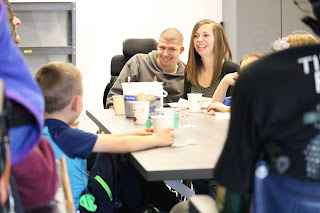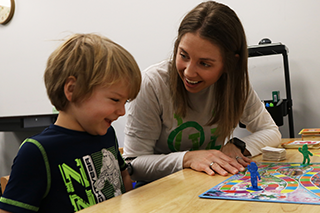Wheelchair Etiquette 101
Generally speaking, people tend to have a sense of uneasiness around something that is unfamiliar or different from what they know. Imagine trying a food you never have before. Do you take huge bite or a tiny sample? What about starting a new job? It’s likely that your biggest worry on the first day is finding your way around a new office space.
These are just small examples of the awkwardness we can feel when doing something that challenges our comfort level. So now think about meeting someone who uses a wheelchair for the first time. Chances are, similar feelings of uneasiness come into play and common questions bubble to the surface: How do I act? What do I say? What do I do?
The reality is that it’s not that hard, because at the end of the day, it’s just another person. But to help, we’ve come up with the top three things to keep in mind when you meet someone who uses a wheelchair.
1. Speak directly to the person
Speak to the person in the wheelchair
directly, not the people or caregiver they are with. You’d be surprised on how
much this happens. Just because someone is in a wheelchair doesn’t mean they
can’t hear you, understand you or communicate with you.
2. Be respectful of the wheelchair
For some people, their wheelchair is an
extension of themselves. Because of that, touching or leaning on the wheelchair
can been seen as an invasion of personal space. Only touch or lean in if you
are invited to do so.
In addition, you should always ask permission or let the person know if you are going to move them while they are in their wheelchair. Doing so allows the person to give direction and remain in control of their independence.
3. Ask if they need help before helping
It’s great that you want to be helpful;
it’s a natural tendency. Most of the time it is appreciated, but you need to
ask first. People who use a wheelchair are capable of doing lots of things on
their own, it may just take a bit longer, or be accomplished in a different way
using adaptive equipment.
By asking if help is needed, the person maintains their independence and leaves the decision on whether they need additional assistance up to them to determine.
Keep these easy, but often overlooked, tips in mind when first meeting someone who uses a wheelchair and you’ll do just fine. If you are unsure of something, just ask what the person would prefer and go from there. Before you know it, you’ll be less worried about doing something wrong and more focused on getting to know someone new.
Like this post? Sign up for CP’s weekly blog post.
Want more information
like this? Sign up to receive CP emails.



Comments
Post a Comment